Art on Campus
Campus Map: Art in Public Spaces (PDF)
COMING SOON: Student Center Back Wall Mural and the Performing Arts Center Facade Project
STUDENT CENTER MURALS
Commissioned in 2021, Amir H. Fallah's epic three-part mural series, Universe, represents the diverse racial and ethnic backgrounds of the Cerritos College community through the depiction of bouquets of flowering plants from around the world. Nestled amongst the floral displays are lockets and similar jewelry, the kind frequently carried by immigrants and refugees across borders as portable keepsakes and/or currency, emblazoned with icons representing the various scholastic disciplines taught on campus. A more in-depth analysis of the artist's practice and this innovative work can found in the video below.
Composite Sketch
This outdoor sculpture by Bridget Beck explores playground sets and animal figuration, crossing formalist sculpture with our collective memory of childhood play. The work is an amalgamation of scavaged objects including shovels, slides, and scrap metal all painted with a monochromatic finish. It resides between the Fine Arts Building and the Performing Arts Center on the Cerritos campus.


Bridget Beck
Composite Sketch, 2016
Sculptural Installation
Location: Between the Fine Arts Building and Performing Arts Center
Composite Sketch invites you to walk around it, and see new things at each turn. At one angle it resembles a lion and at others, a playground set. Coming from her drawing practice, Composite Sketch slides between the 2-D and 3-D space, acting as an ink drawing in the round. The installation recalls childhood memories which works to bring people together and invite compassion and collaboration. Beck has made many works that invite collaboration, including her work "Will Be" which was installed at UCLA and invited at-risk teens from South Dakota to write on and have their faces on the sculpture. She raised funds for this project and even flew out the participating teenagers, many of whom had never left South Dakota. Beck writes that "My art reveals the complex intersections between place, mark-making, object, and action. I am compelled by the architectural restlessness when two- and three- dimensions collide."
A Cerritos College student tour guide may tell you it was made to represent our mascot, the falcon, but this is untrue. This work was acquired by the Cerritos Art Gallery after its inclusion in the group exhibition "CO/LAB 4" at the Torrance Art Museum in 2019. This work was also included in the 2016 "Go Big or Go Home" group show of large-scale sculptures at the Brand Library and Art Center.
Beck is a fine artist focusing in sculpture and drawing. She's currently an instructor at Black Hills State University and received her M.F.A. from UCLA and her B.A. from Augustana University in South Dakota. Her work has been included in exhibitions at the Torrence Art Museum, Brand Library and Art Center, Downtown Art Center in Los Angeles, Minneapolis Institute of the Arts, Outpost Gallery in Joshua Tree, and many other institutions.
STORM E X it a play
This eight-panel mural was painted by the artist in the Projects Room of the Cerritos College Art Gallery over the course of a two-week residency during the Fall semester of 2023, in conjunction with his solo exhibition, Stock Footage and Outtakes: A Selection of Works by Gronk. It was specifically designed to be installed right here, in the West Hallway of the Fine Arts, as an homage to the painted hallway that leads to the artist’s famous studio on Spring Street in Downtown Los Angeles.


STORM E X it a play, 2023
Gronk (Glugio Nicandro)
Acrylic, Oil Pastel, and Charcoal on Wood Panel
84 x 384 inches
Courtesy of the Artist and Craig Krull Gallery
Location: Fine Arts Building, First Floor, West Hallway
Born and raised in East Los Angeles, Glugio Nicandro (better known as Gronk) is a renowned and influential artist, whose legendary, fifty-plus-year practice fluctuates between a range of artistic mediums - from drawing, painting, and printmaking to muralism, performance, and set design.
A consummate collaborator, Gronk has worked with a wide variety of notable peers. In 1969, he wrote and directed Caca-Roaches Have No Friends, a series of infamous performances featuring fellow queer artists Mundo Meza and Cyclona (Robert Legorreta). Along with Willie Herrón III, Gronk painted some of the most important murals in 1970s East LA, including The Black and White Mural (1973) at Estrada Courts in Boyle Heights and Caras (1973, no longer extant) in a pavilion in City Terrace Park. Perhaps most notably, between 1972 and 1987, Gronk served as a core member of ASCO (Spanish for nausea), the innovative Chicano/a/x art collective which, in its original formation, included Gronk, Patssi Valdez, Willie Herrón III, and Harry Gamboa Jr. At the time, the group responded directly, if often playfully, to the socioeconomic and political issues confronting their community, including the Chicano Moratorium and the Vietnam War, as well as other forms of state violence and institutional erasure. Some of their most notable works include Walking Mural (1972), Spray Paint LACMA / Pie in Deface (1972), Instant Mural (1974), and First Supper After a Major Riot (1974). Their ongoing, conceptually-driven project, No Movies, consisted of fancifully-staged images resembling film stills for non-existent movies featuring their own brown bodies, the very kind that were largely ignored by the Hollywood industry of that era, operating on just the other side of town. Separately, Gronk also developed a decade-long mail art practice with artist Jerry Dreva, culminating in a raucous 1978 exhibition at Los Angeles Contemporary Exhibitions (LACE), the important non-profit LA art space that he also helped to found. Additionally, for the last few decades, Gronk has nurtured an important partnership with the theater director, Peter Sellars, producing monumental set designs for major performances, including the operas Ainadamar (2005), Griselda (2011), and The Indian Queen (2013).
Simultaneously, and in tandem, to these many important collaborations, Gronk has continued
to develop his own signature drawing and painting practice. In daily drawing sessions
recorded across numerous journals, not to mention spare bits of paper, coffee sleeves,
and napkins, Gronk has created his own idiosyncratic visual vocabulary of figures,
forms, and abstract patterns. His most recognizable character, of course, is Tormenta,
an elegantly-dressed seemingly-feminine persona (and perhaps, surrogate) who frequently
appears in both his daily drawings and his major paintings. Her perpetually-turned
back denies the viewer’s gaze and, therefore, elides complete knowability, while also
frequently operating as an entry-point into the work. Sometimes, she even casts her
own mimetic shadows, palimpsestic layerings alluding to alternate realities and/or
creative potentialities, such as in his extraordinary painting Puta’s Cave (1988),
a puny play on Plato’s allegory for the illusory nature of all human knowledge. Gronk’s
drawing and painting practice has continued to evolve over the years as he investigates
the emotive potential of these signature figures, forms, and patterns. Landmark exhibitions
include Titanic and Other Tragedies at Sea at Ocaso Gallery (1985), Hotel Senator
at Saxon Gallery (1990), and Gronk: A Living Survey, 1973-1993 at LACMA (1994), the
first solo exhibition, in fact, featuring a Chicano artist to be held at that major
Los Angeles institution.
Gronk holds degrees from both East Los Angeles College and Cal State LA. He was awarded
the Artist of the Year from the Mexican American Fine Arts Association and served
as a Visual Artist Fellow for the National Endowment for the Arts. He has been an
Artist-in-Residence at many institutions around the United States, including at the
University of Wisconsin at Madison, Cornell University, Villa Montalvo, and the University
of New Mexico. His work has been featured in numerous solo and group exhibitions,
both nationally and internationally, in spaces such as the Vincent Price Art Museum,
the Fine Arts Gallery at Cal State LA, the Los Angeles County Museum of Art, the Los
Angeles Museum of Contemporary Art, the Fisher Gallery at the University of Southern
California, the Long Beach Museum of Art, Los Angeles Contemporary Exhibitions, the
San Francisco Museum of Modern Art, the San Diego Museum of Contemporary Art, the
San Jose Museum of Art, the Fresno Art Museum, the Tucson Museum of Art, the El Paso
Museum of Art, the National Hispanic Cultural Center, and the Smithsonian.
The Sound Pavilion
The Sound Pavilion was permanently installed in the gallery courtyard of the old Fine Arts building in 2011 by artists John David O'Brien and Steve Roden, in conjunction with their two-person exhibition at the Cerritos College Art Gallery, drawn into a dialogue. The project was generously funded by a grant from the Cerritos Foundation, with assistance from the President's Office. As was always the intention, the Sound Pavilion has since been relocated to the east foyer of the new Fine Arts building.
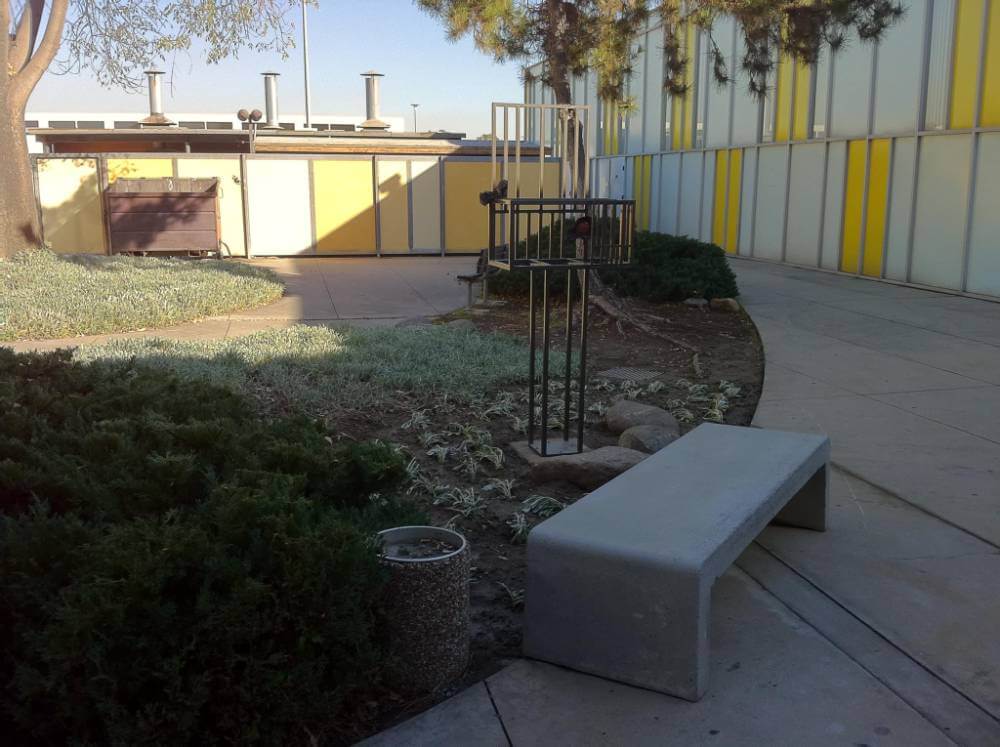
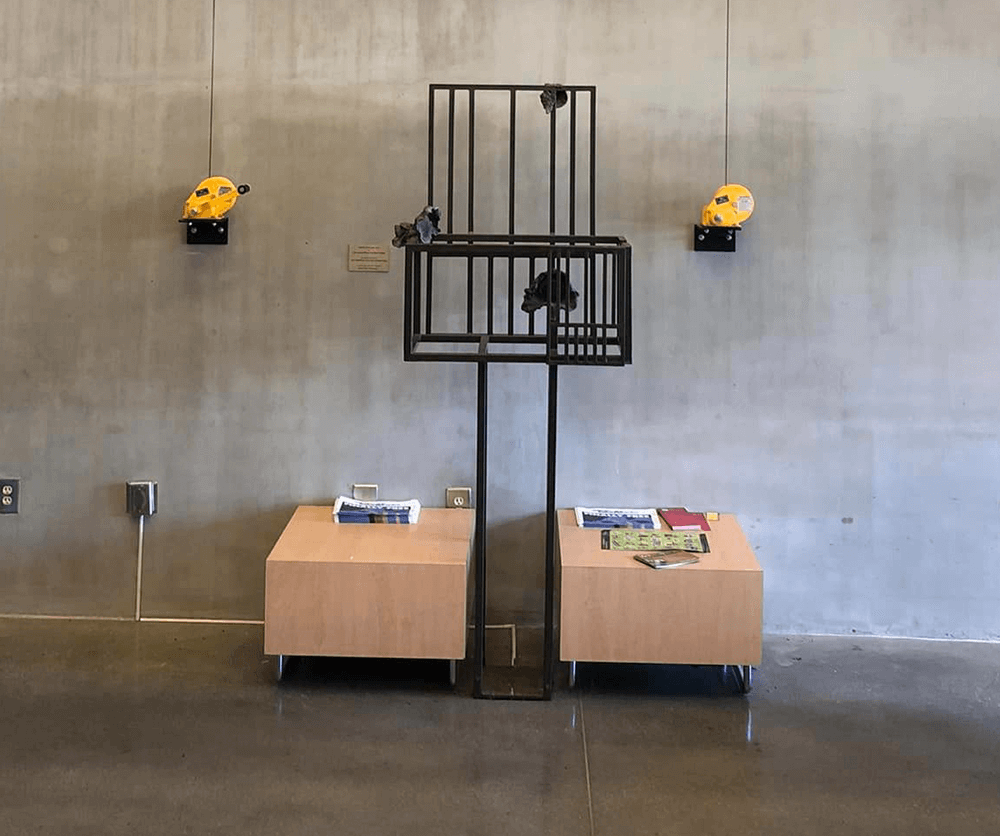
Excerpt from the curatorial essay by director James MacDevitt, describing the project: The artists constructed a permanently-installed and site-specific sound sculpture in the exterior gallery courtyard. With a sound composition based on the architectural rhythms of the building's colored panels, this outdoor installation visually and musically deconstructs the aesthetic logic of the building itself, reinterpreting the facade motifs as both framing device and an autonomous decorative element. As a permanent installation, the sound sculpture will serve multiple functions and participate in multiple dialogical relationships; initially in an on-going and interactive exchange with the current architectural features of the Fine Arts Building that surrounds it and secondly as an interpretative archival document, a memory fragment, of that current structure once it is eventually replaced with a newer building in the not-so-distant future, ensuring that physical demolition will not result in complete and total erasure.
VACANT MARKER
LA-based artist Gustavo Godoy generously donated one of his large cast concrete sculptures to Cerritos College, to be placed on permanent public display at the entrance to Kincaid Field, home base for the college's highly-successful baseball team. Godoy's Vacant Marker sculpture originated as one of a number of abstract pieces he produced for an exhibition entitled Vacant Mounds and Markers at notable Los Angeles art gallery, Honor Fraser. For this 2012 exhibition, Godoy created a new body of cast concrete sculptures he called "mounds and markers,” each piece meant to be ambiguously reminiscent of ancient altars, minimalist sculptures, futuristic architecture, and urban demolition sites. This series of sculptures not only alluded to ancient histories, but also referenced the artist’s own contemporary idols. The Vacant Mounds that originally encircled Vacant Marker (the piece that Godoy ultimately donated to Cerritos College) referenced the pitching mound from Los Angeles' Dodger Stadium, a sacred space for Godoy. In 1981, Fernando Valenzuela, a Mexican pitcher for the Dodgers, quickly became an international phenomenon as he took his team to the World Series Championship and received baseball's most prestigious award for pitching, the Cy Young. Idolizing the pitcher as a child (and furthermore, the stadium), Godoy witnessed first hand as "Fernandomania" swept the country. For the Mexican population of L.A., the success of Valenzuela was especially meaningful considering the controversial history of Dodger Stadium. The stadium was built in Chavez Ravine, an area previously home to a vibrant Mexican American community. In the 1940s, the area was particularly appealing to real estate developers, who saw the potential in the neighborhood's proximity to Downtown L.A. The residents were forcibly relocated to make room for new housing. Although the development never materialized, the land was sold to the Brooklyn Dodgers, creating a home for the newly christened Los Angeles Dodgers in Chavez Ravine. This recounting of fraught histories is prevalent in the Vacant Mounds and Markers series, as Godoy pays tribute to disenfranchised communities, the rise and fall of heroes, and the urban L.A. landscape. Los Angeles is an urban jungle comprised of a stream of traffic and construction set against a landscape of ocean, palm trees and mountains. This juxtaposition of nature vs. industry can be seen in the commonplace materials that Godoy uses to build his sculptures. Maintaining a relationship with the day laborers that build our environments, Godoy's work pays tribute to the true makers of our city. His embrace of quotidian construction supplies, readily found at any home improvement store, renders the objects familiar, yet the weight and stillness of the heavy material provides a solemn, cerebral experience. These concrete forms suggest permanence; a gesture of hope that the art object can capture and maintain the essence of time and social circumstance.
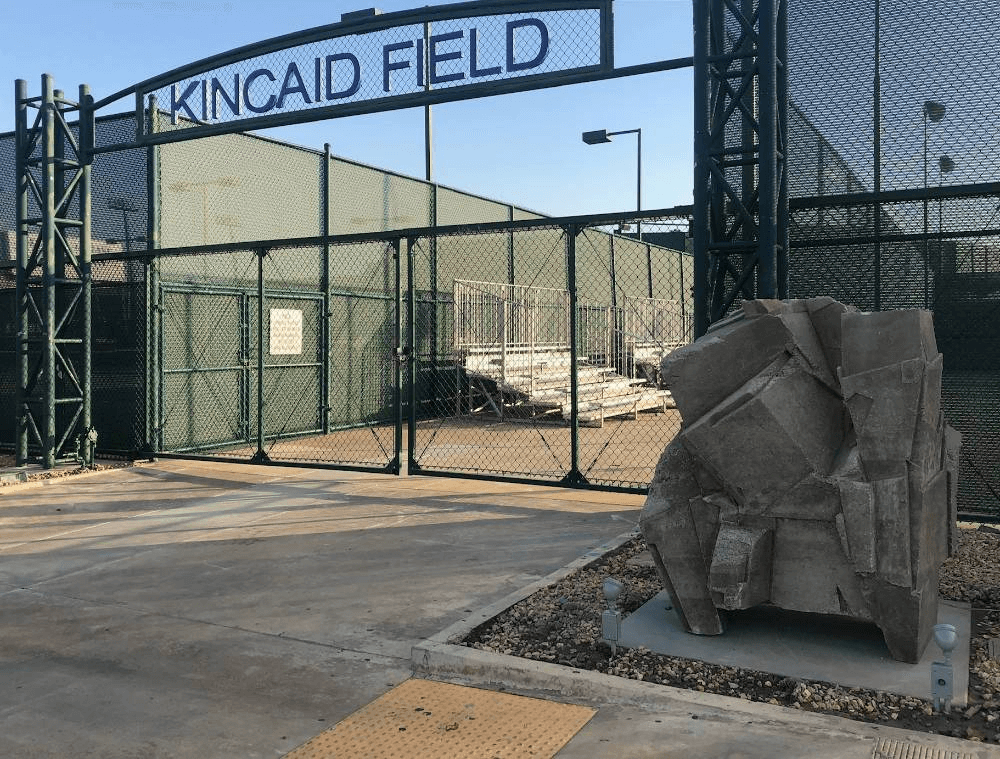
CAPS SMALL ART COLLECTION
Cerritos College has established a unique new publicly-displayed art collection. The collection, to be spread through publicly accessible areas of the campus, features paintings, drawings, prints, and photographs ranging in size from multiple small works on paper to two massive fourteen-foot shaped-canvas paintings. Themes presented in the works reflect the areas of study covered in nearby classrooms. The collection also prominently features works by traditionally underrepresented groups, including notable female artists and artists of color.
In this initial acquisition, the College selected works by 17 contemporary artists: Carolyn Castaño, Amir H. Fallah, Alexandra Grant, Mark Steven Greenfield, Sean Higgins, Virginia Katz, Nery Gabriel Lemus, Melissa Manfull, Álvaro Daniel Márquez, Hung Viet Nguyen, Christina Ondrus, Naida Osline, Julia Paull, Gala Porras-Kim, Lorenzo Hurtado Segovia, Marie Thibeault, and Jessica Wimbley. The campus will continue to expand this public art collection in the coming years.
Tropical Geometries: Quetzal, Azul y Naranja, 2017
Carolyn Castaño
Watercolor and Acrylic on Paper
51 x 40 inches
Courtesy of Walter Maciel Gallery
Location: Liberal Arts Building, Foyer, Second Floor
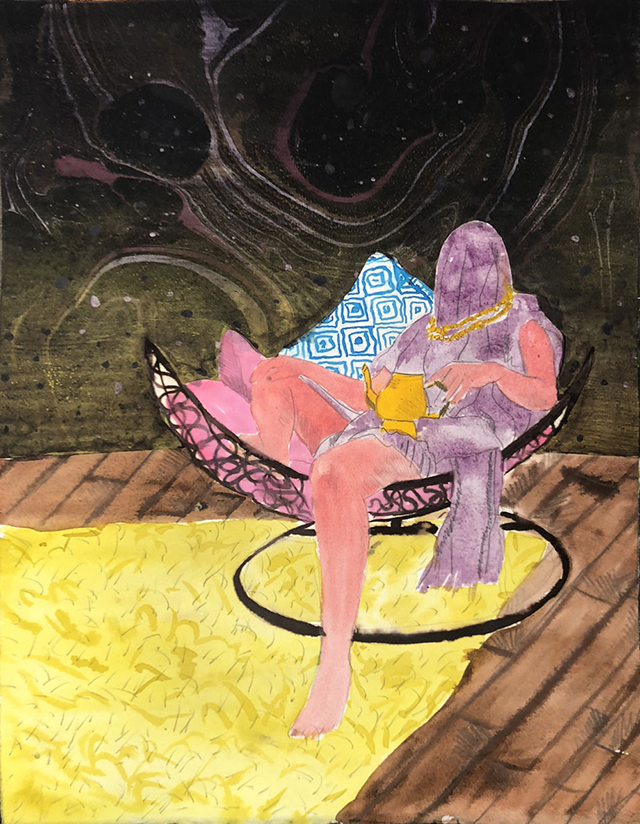
Seems So Long Ago, 2018
Amir H Fallah
Acrylic, Ink, and Collage on Paper
11 x 14 inches
Courtesy of Shulamit Nazarian Gallery
Location: Social Sciences Building, Second Floor
Nimbito, 2014
Alexandra Grant
Pencil on Paper
43 x 43 inches
Courtesy of Ochi Gallery
Location: Liberal Arts Building, South Stairs
Egungun: The Charlotte Observer, 2017
Mark Steven Greenfield
Archival Inkjet Print (Edition of Five)
50 x 40 inches
Location: Fine Arts Building, Second Floor
Eruption, 2016
Sean Higgins
Photo Collage
24 x 24 inches
Location: Physical Sciences Building, First Floor
Bergs, 2016
Sean Higgins
Photo Collage
24 x 24 inches
Location: Physical Sciences Building, First Floor
Offshore Flow - 8 Hours, Silver, 10/05/08, 2008
Virginia Katz
Metallic Ink on Black Paper
44.5 x 30 inches
Location: Physical Sciences Building, First Floor
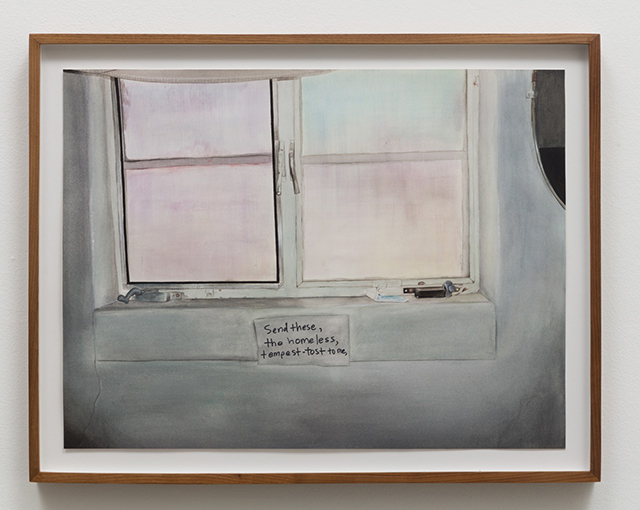
Immigrant Landscape #2, 2017
Nery Gabriel Lemus
Watercolor on Paper
17.5 x 23.5 inches
Location: Social Sciences Building, Third Floor
Totem (Blue Violet), 2017
Melissa Manfull
Ink on Paper Mounted on Wood, Steel Base
19.5 x 8.25 x 5.25 inches
Location: Physical Sciences Building, Foyer, First Floor
Colonial Cartographies: Soil, Land, and Space (diptych), 2018
Alvaro Daniel Marquez
Serigraphy on Archival Inkjet Print (Edition of Two)
22 x 15 inches
Location: Administration Building, Board Room
Los Angeles: Redlining and Gentrification from 1939-2015, 2018
Alvaro Daniel Marquez
Photolithography/Serigraphy on Paper (Edition of Ten)
11 x 15 inches
Location: Business Education Building, First Floor
Tiburcio Vasquez, 2018
Alvaro Daniel Marquez
Three-Layer Reduction Linocut on Paper (Edition of Twelve)
15 x 22 inches
Location: Social Sciences Building, Third Floor
Coastal Sensation #26, 2017
Hung Viet Nguyen
Oil on Canvas
28 x 60 inches
Location: Fine Arts Building, First Floor
Parallax Painting: A Square is a Diamond to Infinity, 2009
Christina Ondrus
Silver Enamel and Day-Glo Paint on Shaped Canvas
50 x 168 inches
Location: Math / Computer Information Sciences Building, First Floor
Parallax Painting: Convergence Skew, 2009
Christina Ondrus
Silver Enamel and Day-Glo Paint on Shaped Canvas
50 x 168 inches
Location: Math / Computer Information Sciences Building, First Floor
Visionary Plants: Borachero, 2017
Naida Osline
Archival Inkjet Print
48 x 60 inches
Location: Nursing Skills Lab, First Floor
Mother Nature's Son: Glass Frog, Costa Rica, 2017-2018
Julia Paull
Archival Inkjet Print
17 x 11 inches
Location: Science Building, First Floor
One Bag of Miscellaneous Spearheads and Sticks, 2009
Gala Porras-Kim
Graphite on Cotton Paper
11.25 x 8.25 inches
Courtesy of Commonwealth and Council
Location: Social Sciences Building, Second Floor
Danza del Venado (Deer Dance), 2017
Lorenzo Hurtado Segovia
Graphite on Paper
11.5 x 10 inches
Location: Social Sciences Building, Second Floor
Heliostation, 2014
Marie Thibeault
Oil on Canvas
72 x 66 inches
Location: Fine Arts Building, East Foyer, First/Second Floor
Americana: Warrior II, 2018
Jessica Wimbley
Photo Collage, Graphite, and Pastel on Paper in Antique Wooden Frame
13 x 19 inches
Location: Social Sciences Building, Third Floor
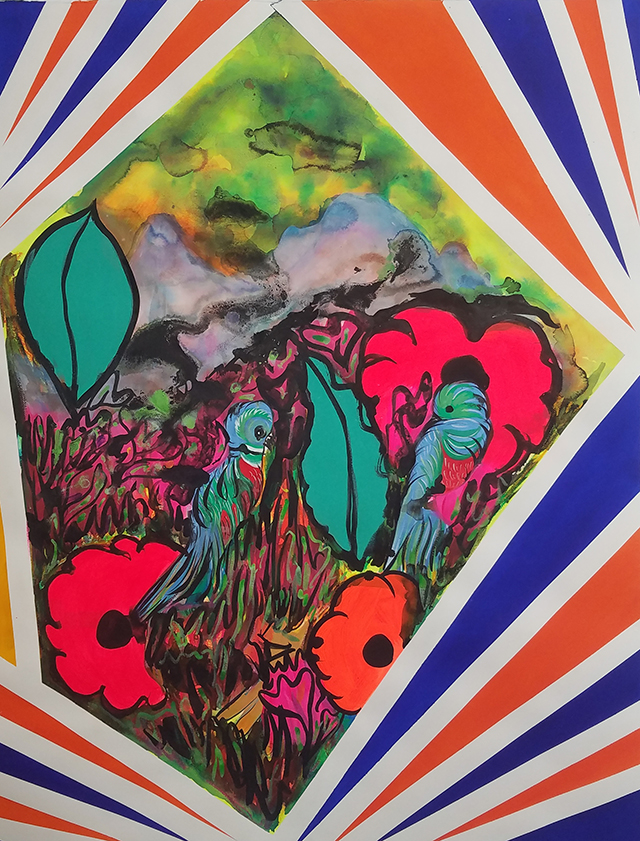

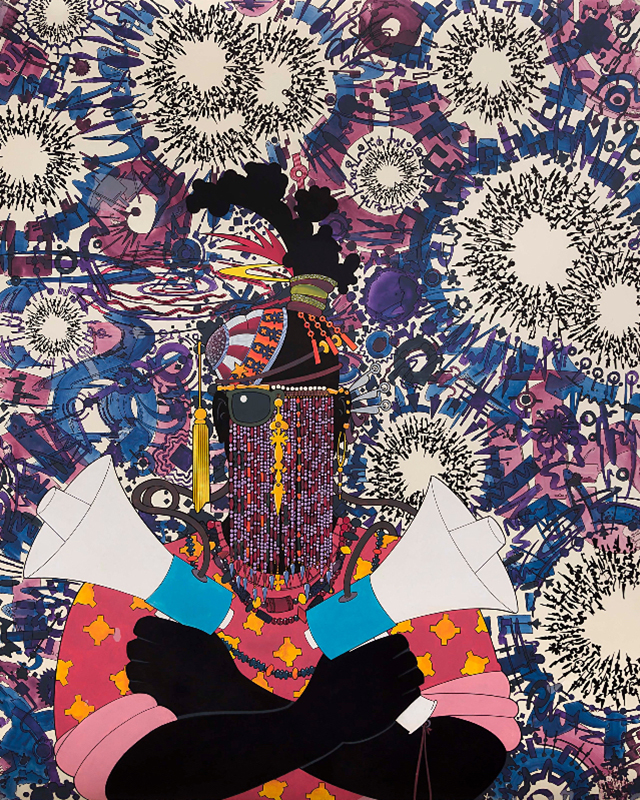
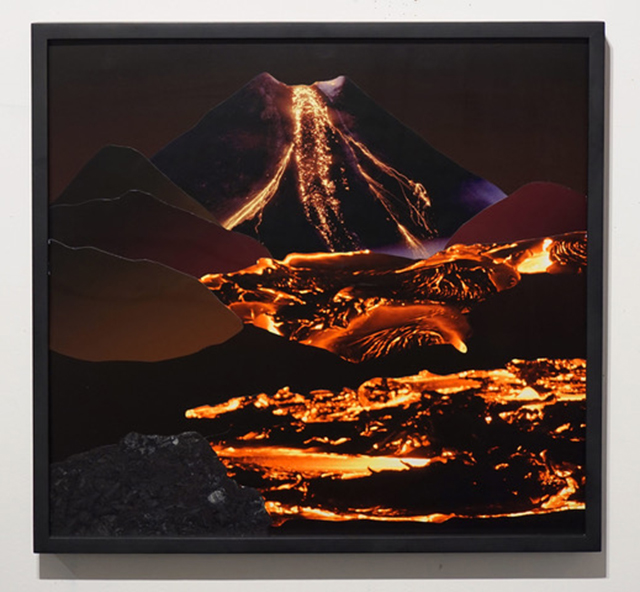
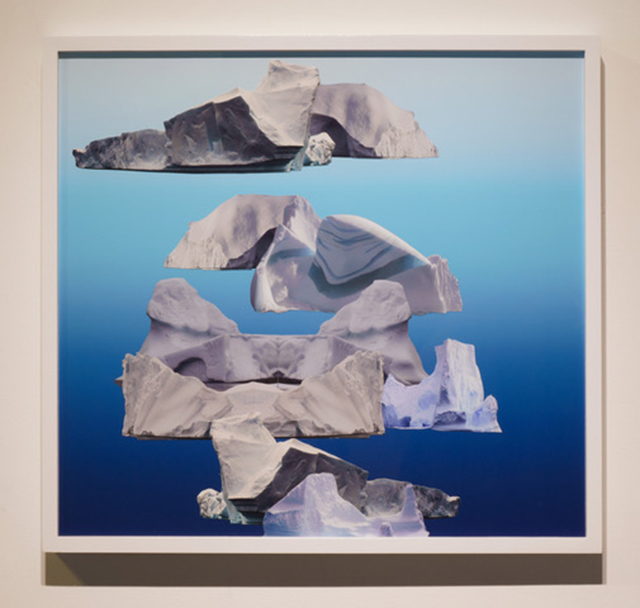

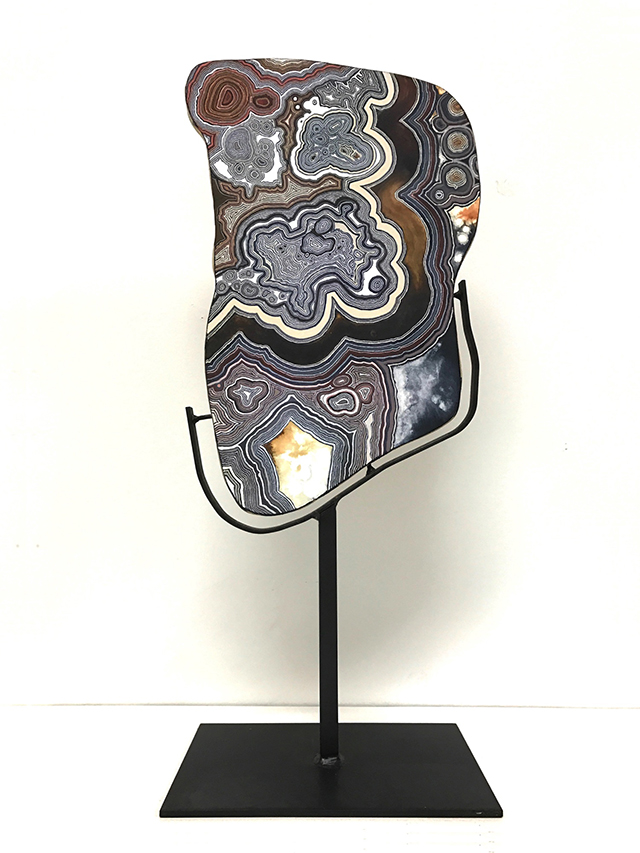

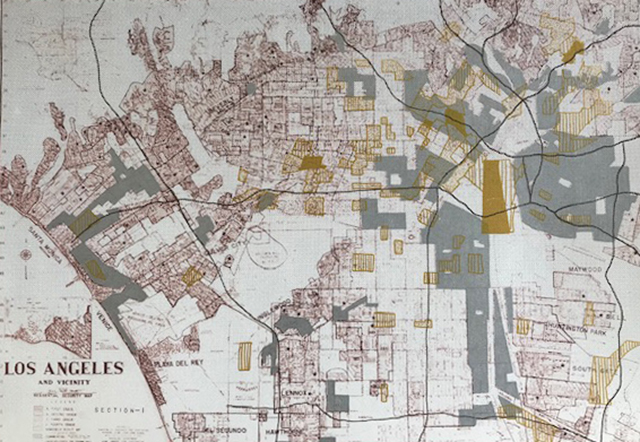
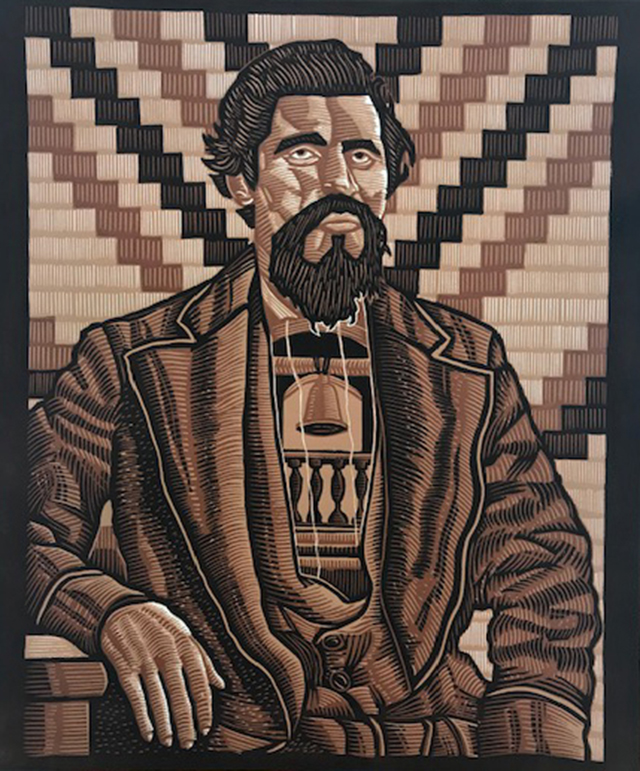
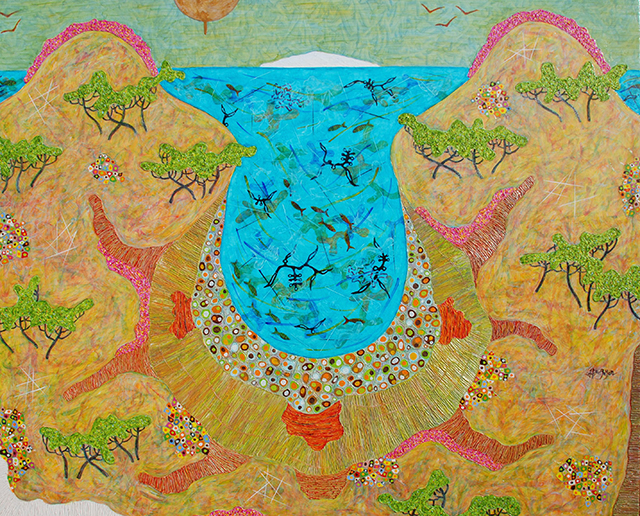
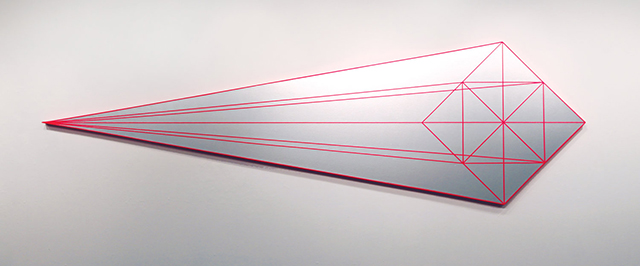
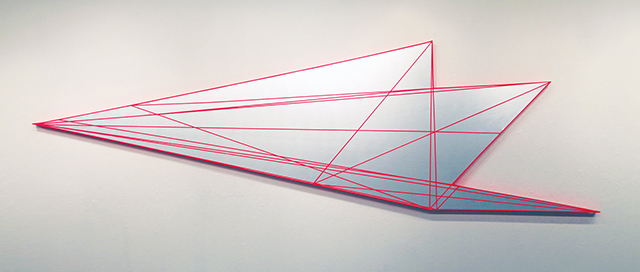
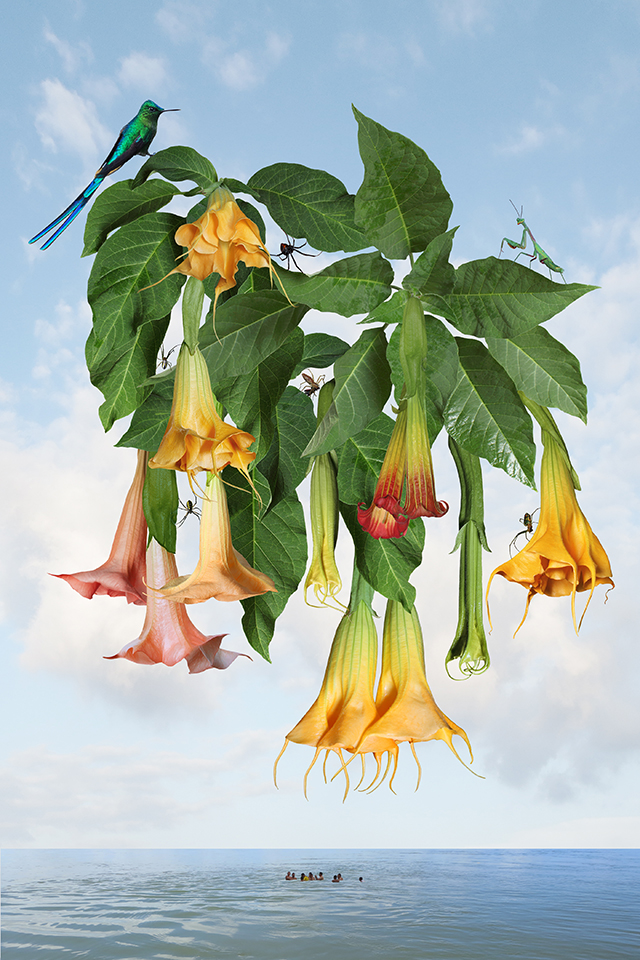
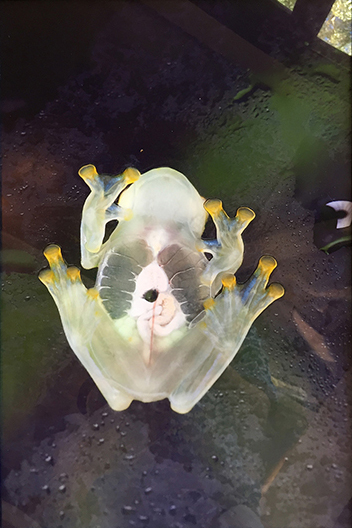
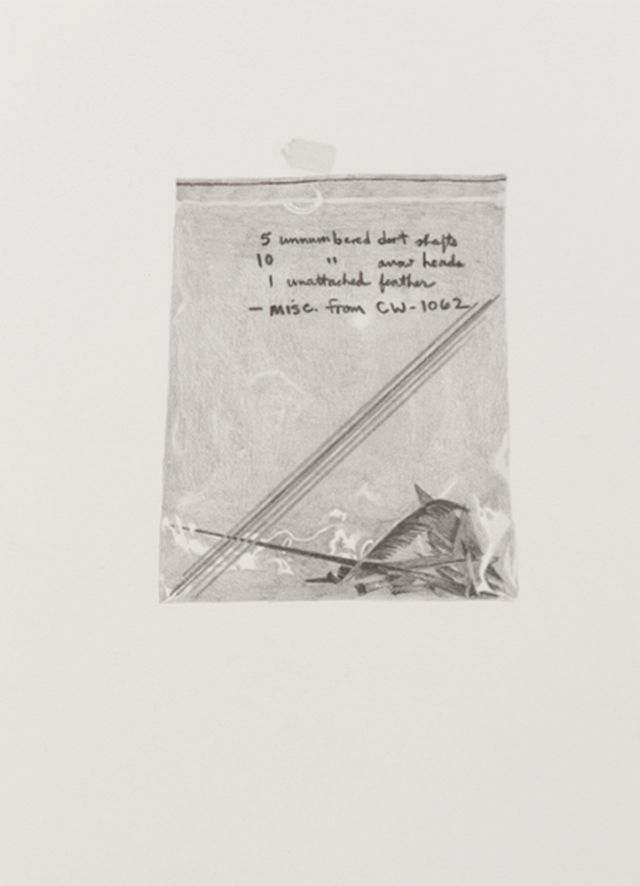
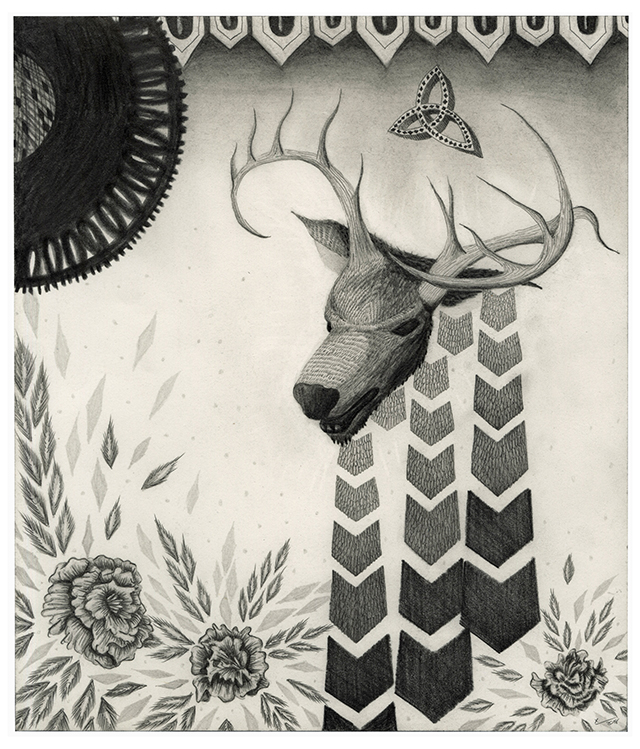
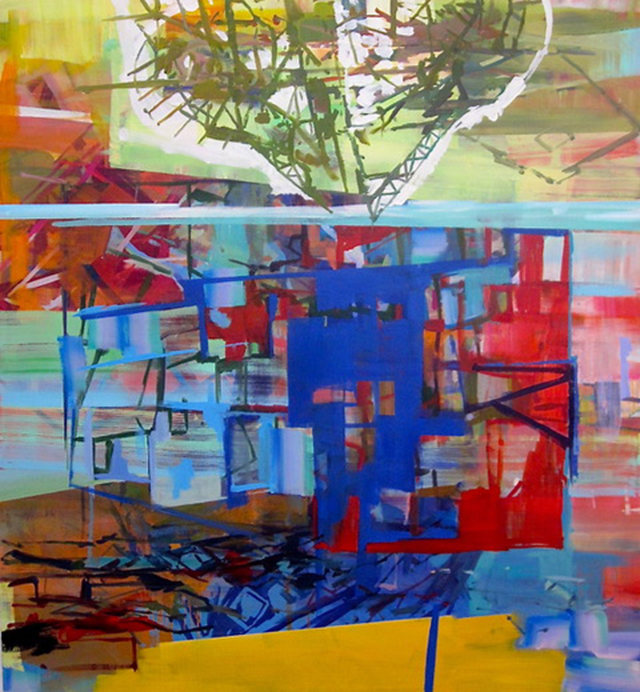
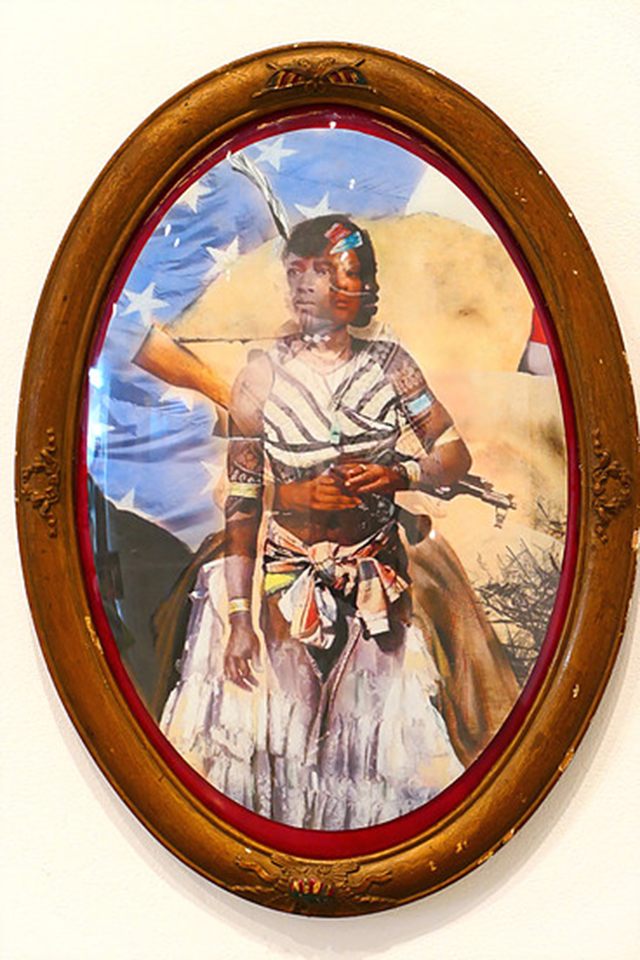

Stay Connected